
Lisa Grossman is the astronomy writer for Science News. Previously she was a news editor at New Scientist, where she ran the physical sciences section of the magazine for three years. Before that, she spent three years at New Scientist as a reporter, covering space, physics and astronomy. She has a degree in astronomy from Cornell University and a graduate certificate in science writing from UC Santa Cruz. Lisa was a finalist for the AGU David Perlman Award for Excellence in Science Journalism, and received the Institute of Physics/Science and Technology Facilities Council physics writing award and the AAS Solar Physics Division Popular Writing Award. She interned at Science News in 2009-2010.

Trustworthy journalism comes at a price.
Scientists and journalists share a core belief in questioning, observing and verifying to reach the truth. Science News reports on crucial research and discovery across science disciplines. We need your financial support to make it happen – every contribution makes a difference.
All Stories by Lisa Grossman
-
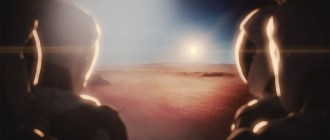 Planetary Science
Planetary ScienceHow to keep humans from ruining the search for life on Mars
As the race to put humans on Mars heats up, researchers worry they are running out of time to find life on the Red planet.
-
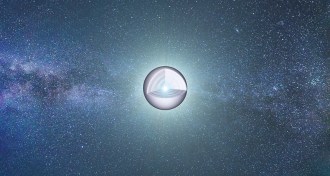 Astronomy
AstronomyWhite dwarf’s inner makeup is mapped for the first time
The first map of the internal composition of a white dwarf star shows these stellar corpses contain more oxygen than expected, challenging stellar evolution theories.
-
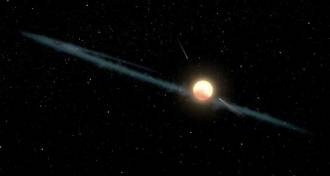 Astronomy
AstronomyAliens ruled out for why Tabby’s star flickers
The first real-time observations of Tabby’s star flickering put the final nail in the “alien megastructure” coffin.
-
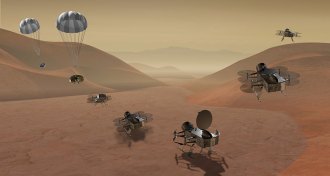 Astronomy
AstronomyNASA’s next stop will be Titan or a comet
The finalists for NASA’s next solar system mission aim to send a drone to Saturn’s largest moon or to return samples from a comet.
-
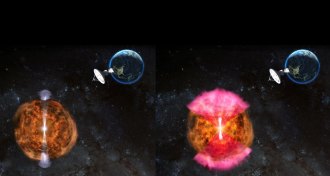 Astronomy
AstronomySmothered jet may explain weird light from neutron star crash
The neutron star collision whose gravitational waves were detected is still glowing in radio waves. The source of those waves might be a new phenomenon.
-
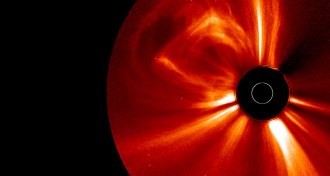 Astronomy
AstronomyThe sun’s outer atmosphere is far more complex than previously thought
The outer corona of the sun was thought to be smooth and uniform. New observations show it’s anything but.
-
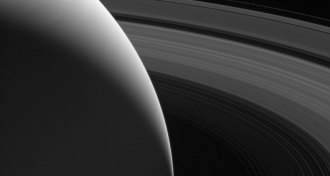 Planetary Science
Planetary ScienceSaturn’s rings are surprisingly young and may be from shredded moons
Final data from the Cassini spacecraft put a date and a mass on the gas giant’s iconic rings.
-
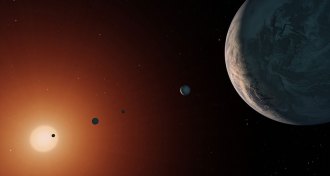 Astronomy
AstronomySeven Earth-sized planets entered the spotlight this year
The discovery of seven Earth-sized planets orbiting a single cool star fuels a debate over what counts as good news in the search for life outside the solar system.
-
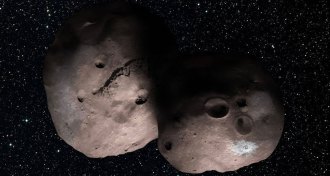 Astronomy
AstronomyNew Horizons’ next target might have a moon
New Horizons’ next target, Kuiper Belt object MU69, may have a small moon.
-
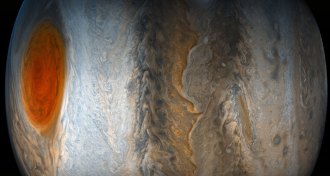 Planetary Science
Planetary ScienceJupiter’s massive Great Red Spot is at least 350 kilometers deep
NASA’s Juno spacecraft has measured the depth of Jupiter’s Great Red Spot for the first time.
-
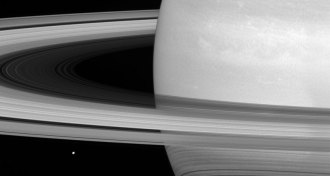 Planetary Science
Planetary ScienceSaturn’s rings mess with the gas giant’s atmosphere
Data from Cassini’s shallow dives into Saturn’s ionosphere show that this charged layer in the atmosphere interacts with the planet’s rings.
-
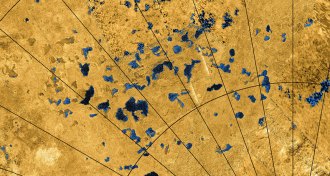 Astronomy
AstronomyMost complete map of Titan reveals connected seas and cookie-cutter lakes
The latest map of Titan, based on all the data from the Cassini spacecraft, displays new details about the moon’s lakes and seas.